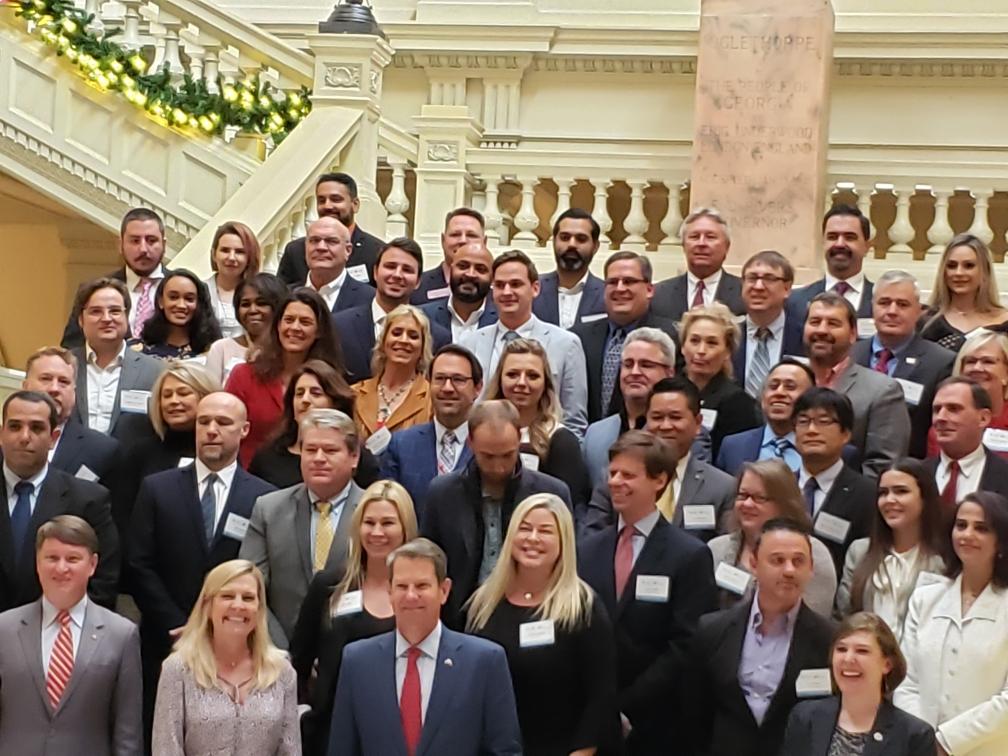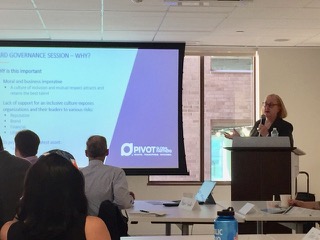Pivot Global Partners recently joined thirty-five other Georgia companies honored at the State’s sixth annual…

SO YOU WANT TO CHANGE YOUR ORGANIZATION’S CULTURE?
“The only thing of real importance that leaders do is to create and manage culture.”
Edgar Schein, Organizational Culture and Leadership, 4th ed. (2010).
Culture has always been an important part of any organization. It’s key in attracting and retaining great employees and is considered by many to be the foundation for organizational growth and innovation.
But how do we define culture? According to Danila Rizo Palmieri, Pivot Global Partners consultant, “Culture integrates an organization’s mission, vision, strategy, values, behaviors, environment, and expectations. An organization’s culture reflects the realities of people working together and, also, how customers are treated. Basically, the organization’s culture is its vital oxygen.”
As organizations give serious thought to creating and implementing a plan to transform their culture, they should use a thoughtful approach that assesses current behaviors and values and defines desired behaviors and values. They should use quantitative and qualitative data to develop insights. Organizations also should focus on building momentum for change by closely engaging stakeholders.
It is important to recognize that there are various contributors to culture in an organization. One contributor is the distinctive culture that already exists in different parts of an organization. For example, the audit department’s culture may be very different than the internal culture of a creative marketing department. Differences in department-specific cultures should be acknowledged and, ultimately, leveraged as part of the overall culture transformation.
So how does an organization drive culture setting or transformation? Consider the following steps:
- Determine your strategic view of current culture, as well the desired culture (values and behaviors) you are seeking.
- Identify your organization’s untouchable practices and behaviors that you may want to revisit in this transformational process.
- Have leadership, board members and representatives of your organization’s functional areas clearly describe their perception of your organization’s culture.
- Use state of the art automated tools to evaluate your current culture at the organizational and individual level. Identify the gaps between qualitative data and the set of values and behaviors your organization is seeking. Draw data-driven insights from the data and the identified gaps.
- Develop a culture setting or culture transformation plan, ensuring it is aligned with your organization’s overall strategy and integrated throughout your business processes and operations. According to Patrecia West, Pivot Global Partners consultant, “All the different levels, functions, operational units and locations should be involved to ensure an integrated picture in the development of strategy, mission and vision, as well as execution. Your organization’s culture setting or transformation strategy should include performance reviews to assess individual culture setting or transformation effort and impact.”
- Align your organization’s culture with your brand. Your employees and the general marketplace should understand and experience your organization’s culture as expressed through your actions and your communications. Consistency of action and frequent, simple messaging are critical.
- Identify and train stakeholders, such as your board members, leaders and influencers at all levels, to lead culture setting, where appropriate. Bring into the conversation individuals with experience in, and accountability for, integrating culture throughout your organization. If necessary, introduce immersive training sessions to build the management skills needed to successfully meet challenges.
- Finally, a strategy to drive culture should result in an agile and adaptive organization, which should contribute to success when coupled with top products and services.
For more information on how Pivot Global Partners can assist your company with culture setting or transformation, contact us at [email protected].



